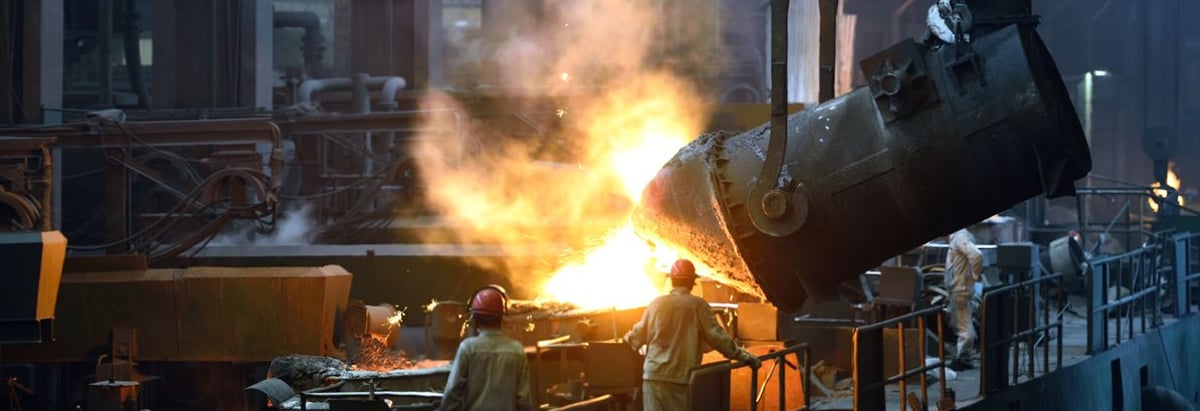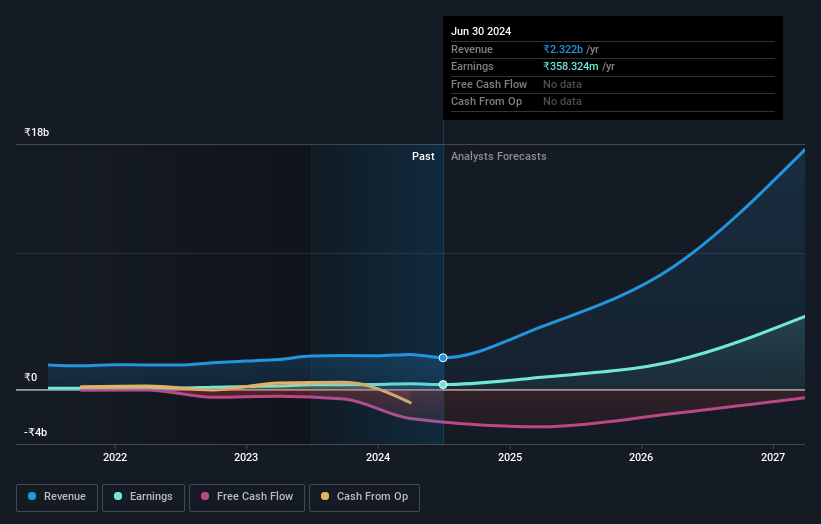- India
- /
- Metals and Mining
- /
- NSEI:PTCIL
Despite selling recently, PTC Industries Limited (NSE:PTCIL) insiders own 49% stake and recent decline might have cost them

Key Insights
- Significant insider control over PTC Industries implies vested interests in company growth
- A total of 4 investors have a majority stake in the company with 50% ownership
- Insiders have been selling lately
To get a sense of who is truly in control of PTC Industries Limited (NSE:PTCIL), it is important to understand the ownership structure of the business. With 49% stake, individual insiders possess the maximum shares in the company. In other words, the group stands to gain the most (or lose the most) from their investment into the company.
Despite selling some shares recently, insiders control a good portion of the company's stock. As a result, they were also the group to endure the biggest losses as the stock fell by 8.5%.
Let's delve deeper into each type of owner of PTC Industries, beginning with the chart below.
See our latest analysis for PTC Industries

What Does The Institutional Ownership Tell Us About PTC Industries?
Institutional investors commonly compare their own returns to the returns of a commonly followed index. So they generally do consider buying larger companies that are included in the relevant benchmark index.
PTC Industries already has institutions on the share registry. Indeed, they own a respectable stake in the company. This implies the analysts working for those institutions have looked at the stock and they like it. But just like anyone else, they could be wrong. If multiple institutions change their view on a stock at the same time, you could see the share price drop fast. It's therefore worth looking at PTC Industries' earnings history below. Of course, the future is what really matters.

We note that hedge funds don't have a meaningful investment in PTC Industries. With a 25% stake, CEO Sachin Agarwal is the largest shareholder. For context, the second largest shareholder holds about 11% of the shares outstanding, followed by an ownership of 7.9% by the third-largest shareholder.
Our research also brought to light the fact that roughly 50% of the company is controlled by the top 4 shareholders suggesting that these owners wield significant influence on the business.
Researching institutional ownership is a good way to gauge and filter a stock's expected performance. The same can be achieved by studying analyst sentiments. There is a little analyst coverage of the stock, but not much. So there is room for it to gain more coverage.
Insider Ownership Of PTC Industries
While the precise definition of an insider can be subjective, almost everyone considers board members to be insiders. The company management answer to the board and the latter should represent the interests of shareholders. Notably, sometimes top-level managers are on the board themselves.
I generally consider insider ownership to be a good thing. However, on some occasions it makes it more difficult for other shareholders to hold the board accountable for decisions.
It seems insiders own a significant proportion of PTC Industries Limited. It is very interesting to see that insiders have a meaningful ₹89b stake in this ₹179b business. It is good to see this level of investment. You can check here to see if those insiders have been buying recently.
General Public Ownership
The general public, who are usually individual investors, hold a 23% stake in PTC Industries. While this group can't necessarily call the shots, it can certainly have a real influence on how the company is run.
Private Company Ownership
We can see that Private Companies own 23%, of the shares on issue. Private companies may be related parties. Sometimes insiders have an interest in a public company through a holding in a private company, rather than in their own capacity as an individual. While it's hard to draw any broad stroke conclusions, it is worth noting as an area for further research.
Next Steps:
While it is well worth considering the different groups that own a company, there are other factors that are even more important. For instance, we've identified 2 warning signs for PTC Industries that you should be aware of.
If you would prefer discover what analysts are predicting in terms of future growth, do not miss this free report on analyst forecasts.
NB: Figures in this article are calculated using data from the last twelve months, which refer to the 12-month period ending on the last date of the month the financial statement is dated. This may not be consistent with full year annual report figures.
New: Manage All Your Stock Portfolios in One Place
We've created the ultimate portfolio companion for stock investors, and it's free.
• Connect an unlimited number of Portfolios and see your total in one currency
• Be alerted to new Warning Signs or Risks via email or mobile
• Track the Fair Value of your stocks
Have feedback on this article? Concerned about the content? Get in touch with us directly. Alternatively, email editorial-team (at) simplywallst.com.
This article by Simply Wall St is general in nature. We provide commentary based on historical data and analyst forecasts only using an unbiased methodology and our articles are not intended to be financial advice. It does not constitute a recommendation to buy or sell any stock, and does not take account of your objectives, or your financial situation. We aim to bring you long-term focused analysis driven by fundamental data. Note that our analysis may not factor in the latest price-sensitive company announcements or qualitative material. Simply Wall St has no position in any stocks mentioned.
About NSEI:PTCIL
PTC Industries
Manufactures and sells high precision metal castings in India, Norway, the United States, the United Kingdom, Brazil, China, and internationally.
Exceptional growth potential with excellent balance sheet.
Market Insights
Community Narratives



